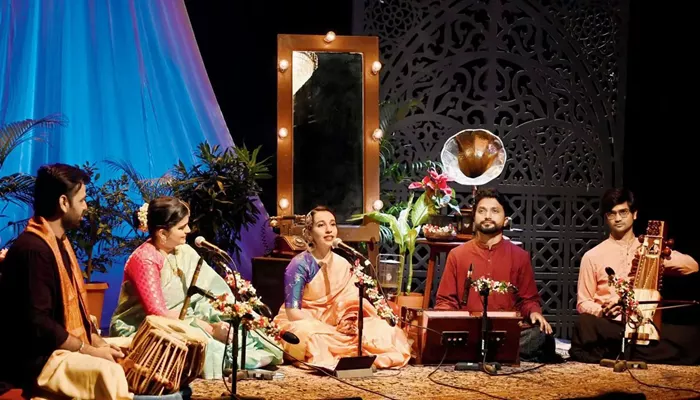In an era dominated by digital distractions, the revival of traditional mehfils and baithaks is breathing new life into India’s classical music scene. Once at the heart of India’s artistic heritage, these intimate gatherings are returning with a fresh appeal, drawing audiences of all ages. Curators, artists, and cultural leaders are ensuring that classical music is far from outdated—it is evolving and thriving like never before.
A Fresh Look at Tradition
The essence of mehfils and baithaks lies in their immersive experience. Unlike the digital world, where engagement is often shallow, these gatherings invite deep participation. As Anubhav Jain, co-curator of Ibtida-Ek-Mehfil, describes, “Every mehfil we host is designed to be felt, not just seen. It’s an atmosphere carefully crafted with colors, textures, scents, and lights to create a memorable experience.” From the flickering oil lamps to the fragrance of roses, every detail is meant to build anticipation and immerse the audience in the atmosphere.
Jain also highlights the communal aspect of these events. “A mehfil is not a performance; it’s a conversation. It’s about creating a shared moment,” he says. This return to the sacred nature of live art sets mehfils apart from the distractions of modern life, where focus and presence are often lost.
Modern Appeal and Changing Audiences
The revival of these gatherings isn’t simply about nostalgia—it’s about connecting modern audiences with traditions while adapting them to contemporary tastes. Mehfils are now attracting younger crowds who appreciate not only classical music but also a mix of genres and interactive experiences. Music legend Usha Uthup notes, “It’s not just about classical music anymore; people are engaging with different kinds of music and conversations.”
While seasoned music lovers continue to attend, younger listeners are becoming a significant part of the audience. Jain observes that nearly 40% of their attendees are now under 40, a sign that mehfils are resonating with a new generation.
Tanvi Singh Bhatia, curator at Ibtida-Ek-Mehfil, underscores the importance of these gatherings in cities like Mumbai, where audiences are engaged and eager for diverse musical experiences. “It’s inspiring to see people not only enjoying popular ghazals and Bollywood hits but also learning about traditional forms like Thumri and Dadra,” she adds.
Innovation Within Tradition
The revival of mehfils and baithaks is not about simply preserving the past but innovating within tradition. Sanjay Garg, founder of Raw Mango, emphasizes that the concept of a baithak has always evolved with time. “The first baithak could have taken place in a cave or a haveli, but what matters is making it an inclusive and joyful experience,” he says. According to Garg, the key to these events is adaptability, ensuring they remain relevant while staying true to their roots.
Bhatia reflects on the thoughtfulness behind curating each event, where the artist’s performance and the curatorial choices are carefully balanced. “It’s not just about performing well-known songs. It’s about creating a flow and an experience for the audience,” she explains. This approach helps foster a sense of connection between the audience and the art.
Jain further adds, “Every guest is personally acknowledged. We guide them into a story, making sure they feel a part of something bigger than just the music.”
Looking Ahead: The Future of Mehfils and Baithaks
The future of mehfils and baithaks looks promising, with plans to expand and incorporate other elements of Indian culture. Jain hints at broader cultural celebrations, saying, “In 2025, we plan to broaden the scope of Ibtida to include not just music but also Indian art, architecture, and culinary experiences.”
For Usha Uthup, these gatherings offer unlimited potential. “The way these shows are curated is exquisite. It’s a new experience every time, connecting with audiences from across age groups, from young to senior,” she shares. The diversity of age and experience in the audience enriches the overall experience, making each performance unique.
The revival of mehfils and baithaks signifies more than a nostalgic return to the past—it is a modern cultural movement that is reintroducing live Indian music to new audiences. By blending tradition with innovation, these gatherings are ensuring that classical music continues to captivate and inspire for generations to come.
Related Topics

